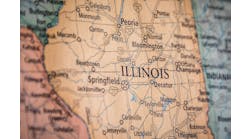Public health departments’ case report volumes are forecasted to double when federal requirements for automated electronic laboratory reporting of notifiable diseases go into effect next year, according to a new study.
The study—which was done by researchers from the Indianapolis-based informatics and healthcare research organization Regenstrief Institute, and the Indiana University School of Informatics and Computing at Indiana University-Purdue University Indianapolis— is the first to estimate what will occur with the 2015 required adoption of electronic laboratory reporting under the Centers for Medicare and Medicaid Services (CMS)' meaningful use program. Past studies have noted that volumes increase following the introduction of electronic laboratory reporting, however.
Notifiable disease reports—required for sexually transmitted diseases, E. coli, tuberculosis, Lyme disease and other conditions—typically are submitted by hospitals and physicians' offices to state and county public health departments by fax or phone, or even paper mail. Electronic laboratory reporting not only prevents information from falling through the cracks, but it improves timeliness of data transmittal, which can be critical in preventing the spread of disease, according to a Regenstrief Institute announcement.
"An increase of the magnitude we estimate will significantly impact local and state health departments' workloads as they follow up on reports, placing pressure on these departments, many of which have had budget cuts, to do more with less," study lead author Brian E. Dixon, Ph.D., Regenstrief Institute investigator and assistant professor of health informatics at IUPUI, said in the announcement.
The study's authors used data from the Indiana Network for Patient Care to project the national scenario. Developed by the Regenstrief Institute and operated under license by the Indiana Health Information Exchange, the Indiana Network for Patient Care electronically captures and handles several million secure transactions of clinically relevant data such as laboratory test results, medication and treatment histories daily. Metropolitan Indianapolis is the most healthcare-wired city in the nation, according to the announcement.

